Snow & Ice: Safety before price P12
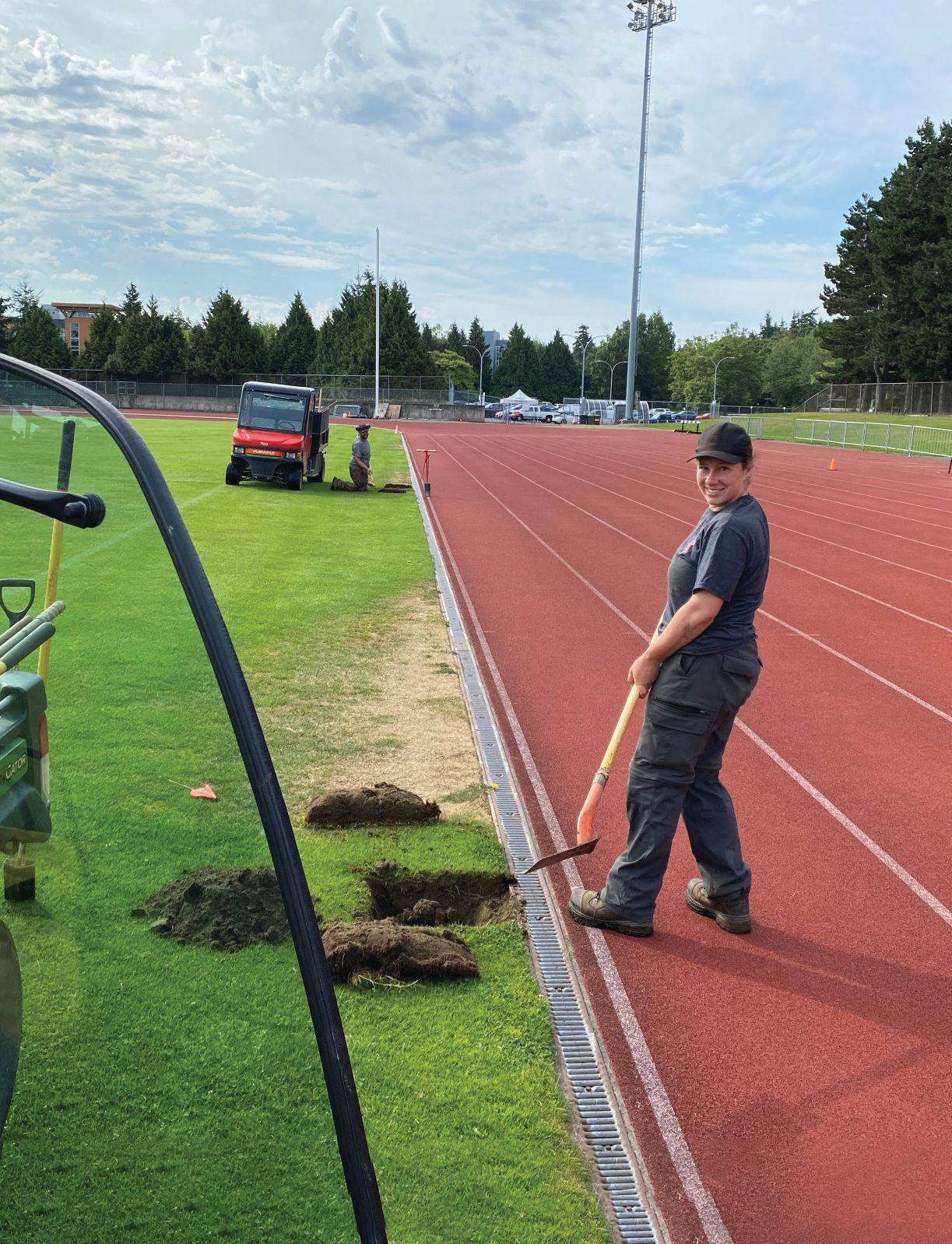
turfandrec.com

Snow & Ice: Safety before price P12

turfandrec.com
Golf: A pre-tournament rude awakening P18
Landscaping: Getting equipment ready for spring P22


The KMA 135 R battery-powered KombiEngine is a versatile tool that can efficiently loosen soil, blow debris, trim grass and hedges, prune trees, manicure paths and gardens. The use of one powerhead with 14 separate attachments welcomes more storage space and less maintenance of multiple tools. The KMA 135 R is lightweight, emission-free and quiet in operation. The effortless KMA 135 R features a brushless motor and provides the performance that landscapers and groundskeepers require to complete their work in a timely manner. The ergonomic loop handle provides greater comfort and less user fatigue. Built with three power settings to offer the momentum required for a task, while conserving battery energy and longer battery runtimes.

Power. Made by STIHL.
① Battery and charger sold separately. ② Weight without battery.
PRO-FLEET COMMERCIAL LANDSCAPE PROGRAM
STIHL’s Pro-Fleet Commercial Landscape Program is designed to provide commercial landscapers a volume discount on purchases of five or more landscaping power tools. Receive additional savings on STIHL battery products until June 30, 2023. Visit your STIHL Dealer today to learn about our power, performance and durability difference



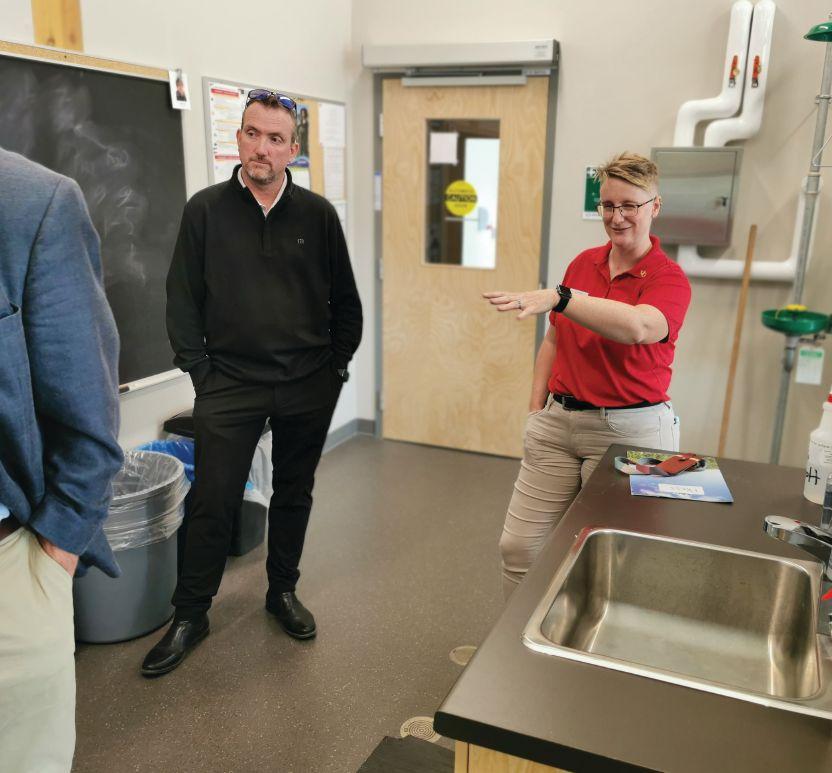
These women are the industry’s tops
The importance of reducing painful tendon disorders
Women who are the tops in turf
The first part of a two-part feature, profiling eight of the leading women working in the Canadian turf and grounds maintenance industry

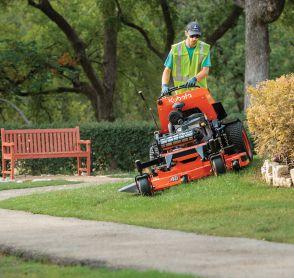
06 | In the news
OTRF awards three key projects for University of Guelph studies 28 | Research Lawn quality at risk in leaf cover

By Mike Jiggens
In this and our subsequent April/May issues, Turf & Rec is celebrating and profiling some of the industry’s most influential, innovative and hardest working women. Women in the professional turfgrass industry still find themselves among the minority, but the gap in the ratio between men and women has been noticeably closing the past couple of decades.
When I began working for this publication almost 30 years ago – it will be 30 next year – I could almost count the number of women I came across on one hand. It was rare to find more than a couple of women at some of the industry conferences and events, and I began to wonder if turfgrass management was maybe a “guy” thing.
This Women in Turf celebration was a project we’ve discussed for some time. We tested the waters somewhat a handful of years ago, but this current incarnation of eight selected nominees was a step toward something a little more formal. We wanted the industry itself to put forth the names of some of these leading women.
Wishing to profile eight deserving candidates, we found it would be in our best interests to feature four at a time – in this and the following issue. Grouping them together in one story would have been an injustice to these women. To keep the story at a reasonable word count, it
would have meant slashing their profiles in half.
In addition to the two-part print story, we’re also launching a four-part podcast series featuring two of our selected women in each episode. Watch for it on our website.
There isn’t a position that a women cannot manage
What I personally found most interesting during my telephone interviews with these eight women was that at least half of them had no initial intentions of entering the turfgrass industry. It wasn’t until they got a taste of the industry that they realized this was their calling all along.
One of our honourees wanted to become a veterinarian. Another was originally working in an automotive assembly plant. One was studying criminal justice. One was bent on becoming an interior decorator. For various reasons, these initial pursuits failed to pan out.
The common denominator that led to their change in career paths, it seemed, was their desire to work outdoors and get their hands dirty. They came to realize they had ultimately chosen the careers that were right for them, and they’ve never looked back.
Each of our eight selected Women in Turf has offered sound advice for other women who
might be contemplating careers in this industry. They’ve universally said to not be afraid nor intimidated. They’ve added there isn’t a position within the industry that a woman cannot manage.
Unfortunately, some men – a group that’s getting smaller and smaller – aren’t ready to yield to women just yet and aren’t enamoured with having to answer to someone of the opposite sex. There’s still work to be done to achieve full equality, but larger strides have been taken in recent years to rectify that. It’s a change in mindset that seems to be working.
It’s no longer a matter of women not being able to physically lift more than their male peers. With advances in technology and mechanization, the ability to lift heavy loads isn’t the prerequisite it once was generations ago. The ability to lead, mentor, manage and innovate are what’s important today, and it has become much more of a level playing field among those who wish to enter the industry.
The women we are profiling in this and the next issue are good examples of women that others can look up to.
Take Tracy Fowler, for example. The Hamilton Golf & Country Club assistant superintendent will be featured in our second installment, but she has mentored more people – female and male – than she can remember over the past 35 years.
Her ability to lead and mentor are among the things that provide her with the most pride.
www.turfandrec.com
Reader Service
Print and digital subscription inquiries or changes, please contact Angelita Potal, Customer Service Tel: (416) 510-5113 apotal@annexbusinessmedia.com
Mail: 111 Gordon Baker Rd., Suite 400 Toronto, ON M2H 3R1
Editor Mike Jiggens mjiggens@annexbusinessmedia.com
Advertising Manager Rebecca Lewis 519-400-0322 rlewis@annexbusinessmedia.com
Account Coordinator Trish Ramsay 416-510-6760 tramsay@annexbusinessmedia.com
Audience Development Manager
Anita Madden Tel: (416) 510-5183 amadden@annexbusinessmedia.com
Group Publisher Anne Beswick 416-410-5248 abeswick@annexbusinessmedia.com
President/COO Scott Jamieson sjamieson@annexbusinessmedia.com
Printed in Canada ISSN 1186-0170
PUBLICATION MAIL AGREEMENT #40065710
SUBSCRIPTION RATES
Published 7 times a year – Jan/Feb, March, Apr/May, June/July, Aug/Sept, October, Nov/Dec
Canada – 1 year $35.00; 2 year $45.00 3 years $55.50 (plus applicable taxes HST 86717 2652 RT0001
Occasionally, Turf and Recreation will mail information on behalf of industry related groups whose products and services we believe may be of interest to you. If you prefer not to receive this information, please contact our circulation department in any of the four ways listed above.
Annex Privacy Office privacy@annexbusinessmedia.com Tel: 800.668.2374
No part of the editorial content of this publication may be reprinted without the publisher’s written permission © 2023 Annex Business Media. All rights reserved. Opinions expressed in this magazine are not necessarily those of the editor or the publisher. No liability is assumed for errors or omissions.
All advertising is subject to the publisher’s approval. Such approval does not imply any endorsement of the products or services advertised. Publisher reserves the right to refuse advertising that does not meet the standards of the publication.





Deere and the Wirtgen Group have built a worldwide reputation of ge t t ing the job done smarter, sa fer, and more sustainably. Join us at CONEXPO-CON/AGG to see our largest booth yet — featuring the latest innovations across your production systems. From dirt to rock to road, we’ll have it in Vegas.



Tee times were fully booked in mid-February at the Chedoke Golf Course in Hamilton as temperatures soared to 15 degrees Celsius.
The average temperature for this time of year is minus 1.3 degrees. Golfers were also out in droves the previous Sunday and Tuesday, and tee times were already filling up for the coming Sunday and Monday as temperatures continued to be warmer than usual.
Global News is investigating the case of a Scarborough, Ont. snow contractor who has allegedly taken an elderly couple’s up-front payment and not turned up to remove snow from their property.
The couple receives daily medical care and can’t do the job themselves. It also makes it difficult for care workers to access their home.
City council in Sudbury, Ont. was to entertain a motion in February to adopt No Mow May – a program aimed at growing pollinator populations.
The program’s purpose is to encourage residents to wait until June to mow their lawns, giving bees, butterflies and other pollinators a greater chance to access nectar.
The program got its beginnings in the United Kingdom.
Kingston, Ont. had earlier endorsed the No Mow May initiative.
For another take on No Mow May and similar environmental campaigns, see page 28.
The temperature reached in February that led to a full golf course

The University of Guelph has been awarded grants for three research projects by the Ontario Turfgrass Research Foundation.
The grants help to advance the turf industry with products, practices, and enhancements for sports fields, public parks, residential lawns, golf courses, and municipal green spaces.
The University of Guelph projects include:
program began in the United Kingdom
• Investigation in the management of take-all patch in Ontario and Canada, led by Dr. Katerina Jordan. With the recent identification of the G cylinrosporus pathogen of the bentgrass patch disease, this project’s goal is to work on developing a long-term management strategy for take-all disease with an emphasis on management in high soil pH environments.
• Evaluation of overseeding sports fields with new species and cultivars, led by Dr. Eric Lyons. Overuse of sports fields is a
tough challenge for turf managers maintaining ideal field conditions in northern climates. Researchers will evaluate the use of tall fescues and quick-germinating Kentucky bluegrass in overseeding programs under heavy field traffic conditions compared to traditional overseeding with perennial ryegrass.
• Testing probiotics to reduce nitrogen fertilizer and water usage in turfgrasses, led by Dr. Manish Raizada. Probiotic microbes for turf represent potential technologies to reduce the use of synthetic nitrogen fertilizer and water on turf areas by improving nitrogen use efficiency (NUE) and water usage.
The OTRF is also funding a fourth project, to be conducted at Oregon State University by Dr. Alec Kowalewski. The project is an evaluation of stress response in selected grasses.
can expect to see New Products from Quali-Pro with Control Solutions Inc., Quali-Pro now has:
• Access to a broad portfolio of innovative and post-patent solutions.
• Turf-focused research and development.
• Dedicated manufacturing, formulation, and regulatory teams.

Control Solutons Inc. (CSI) is a subsidiary of Adama, the 5th largest Agricultural Chemical company in the world. This thriving partnership enables CSI to not only offer the largest selection of products but also to introduce, innovate, differentiated products and exclusive access to the broadest array of Active Ingredients in the industry.
The first part of a two-part feature, profiling eight of the leading women working in the Canadian turf and grounds maintenance industry.
By Mike Jiggens
Times have changed, and the professional turfgrass maintenance industry is no longer an old boys’ club. More and more women are entering the field every year, and an increasing number of them are climbing the ladder to take on managerial, administrative and even ownership roles within their sector of the industry.
Even though the turf industry remains male dominated, the ratio isn’t as lopsided as it once was, and an increasing number of women are joining the ranks of their brothers and reaping the same rewards.
Late in 2022, Turf & Rec solicited nominations from among its readers to learn who some of these bright, innovative and resourceful women are. From the many nominations received, eight individuals were chosen for the spotlight in Turf & Rec’s official inaugural Women in Turf campaign.
Four of those selected honourees are profiled in this issue while the remaining quartet will be featured in Turf & Rec’s subsequent April/May issue. Additionally, each of them can be heard in a series of podcasts that will soon be available for listening on Turf & Rec’s website. They will share their reasons for seeking a career in the turf industry, the highlights they’ve enjoyed, the challenges they’ve faced and the words of advice they have for other women who may wish to follow in their footsteps.
In this story – the first of two parts – we are profiling:
• Julie Vonk, team leader at Burch Landscape Services Ltd. in Waterloo, Ont.
• Miranda Robinson, operations manager for the British Columbia Golf Superintendents Association

• Sara Stricker, communications co-ordinator at the Guelph Turfgrass Institute
• Emily Nuttall, irrigation technician at the University of Victoria.
Julie Vonk
A career in turf wasn’t on Vonk’s radar in the beginning. She went to school to study interior decorating, “and then I decided I didn’t like the whole dress pants, dress shirt, be nice to people all the time thing.”
But a love of gardening and the outdoors was in her blood, and that led to a study of horticulture at London, Ont.’s Fanshawe College. Graduating in 2009, she worked initially at a garden centre before joining a garden company for almost 10 years. Her expertise in horticulture finally led her to Burch Landscape Services in Waterloo where she’s “doing pretty much everything.”

As a lead hand horticulturalist, Vonk heads up a team of two others – both women – but if there are garden installations to be done, she’s in charge of up to eight people, including men.
“We’re called Team Hulk because we pretty much destroy the guys’ crews,” she said. “We always have to help them finish their stuff, and they don’t have any gardens to do.”
Burch Landscape Services is a design/build, lawn maintenance, installation and snow and ice management company whose clientele is mostly residential with some commercial properties. Summer and winter services are provided to upwards of 100 residential properties in the Kitchener-Waterloo area.
The company’s customers are mainly high-end residential homeowners who expect their lawns to be completely free of weeds.
“Which is fine, and that’s usually why I’m the one who gets put on those specific properties because I let everyone
else cut the grass and I go right to the gardens every week.”
Vonk’s goal is to have all trimming and dead-heading work meet her own personal standards which often exceed those of the customer’s.
“Sometimes the customers will come out and tell me, ‘Julie, it doesn’t have to be perfect.’ Yes, it does, actually.”
One of the things she enjoys most is installing ponds and water features.
“You start with absolutely nothing, dig a giant hole –and it looks like all hell broke loose – and you end up with this beautiful water feature at the end.”
What she enjoys most, however, are garden installations.
“Making something out of nothing is really rewarding. You just see a blank slate and then, all of a sudden, it’s completely different. I like seeing customers’ faces when they come out and say, ‘Oh, my god. It’s so beautiful.’”
Although Vonk and her two female crew members at Burch are outnumbered by the company’s male complement, she doesn’t feel intimidated. In fact, she said her male co-workers are “scared s**tless” of her.
“I’ve always worked with guys. My friends have always been guys more so than girls.”
Words of advice she would offer to other women contemplating a career in the turf industry: “You cannot be afraid to get your hands dirty or work your ass off to get what you want. You can’t just expect it to be handed to you because you’re a girl.”
Like Vonk, a career in turf wasn’t on Robinson’s mind at the outset. As a summer student living in Ontario, she worked two summers at a General Motors manufacturing plant “and hated every single second of it. Being trapped inside was just terrible.”
Two of her friends were working at a golf course at the time and persuaded her to follow suit.
“I went from about $30 an hour to $8 an hour, but I just fell in love with it (golf course maintenance).”
the
Robinson has remained in the golf industry ever since, and 2023 marks her 19th year in turf. Once getting a taste of a career in golf, her ambition was to ultimately become a superintendent, which she achieved while she was still in her 20s. Her first superintendent’s job was at Whitetail Golf Club in Eganville, Ont.
“That was such a good feeling of accomplishment to be able to finally get to a place where I was at the top part of the food chain in that portion of turf maintenance.”
Along the way, Robinson worked at Oliver’s Nest Golf Club in Oakwood and Watson’s Glen Golf Club in Pickering. From Whitetail, she moved on to Summerlea Golf Club in Port Perry to become its new superintendent and

shortly afterward became consulting superintendent at Western Trent Golf Club in Bolsover.
“I was actually working at two different golf courses at the same time in a superintendent’s capacity, but the best part was they were both owned and operated by women.”
In more recent years, Robinson sought a change of scenery and moved west to work at the Cordova Bay Golf Club in Victoria, B.C. as an assistant superintendent. She gave up the position at the end of 2022, however, to begin a new career as operations manager for the British Columbia Golf Superintendents Association.
“I make whatever they need to happen happen.”
She described her role as more member services-like while her predecessor had more of an administrative role. Her focus now is to grow the association. Robinson began her new position with the BCGSA on Jan. 1.
Although a key reason for her decision to move to British Columbia was the chance to spend more time outdoors in a more favourable climate, she said she’s just as happy to be inside when it’s raining or colder.
Robinson’s propensity for getting injured on the job was a contributing factor toward taking on her new role with the association.
“I don’t have an off button. I don’t know how to slow myself down. I keep hurting myself because I work aggressively and get stuff done,



Fundamentals of Turfgrass Management is the longstanding authority on all aspects of the science and practices behind world-class turfgrass care. This fully revised Fifth Edition comes enriched by two new authors who share their cutting-edge research and realworld expertise on such topics as growth, soil testing, nutrition, herbicides, insecticides, and fungicides. Whether you’re earning a degree or a paycheck, Fundamentals of Turfgrass Management, Fifth Edition remains the most complete, respected guidebook of solutions for developing and maintaining the finest-standards of turfgrass.



and my body ends up paying the price for my brain’s initiative. It’s going to be really good to be able to focus on getting my body a little bit back to a better physical stage. I’m looking forward to that part of it.”
A career in plant science wasn’t Stricker’s first choice when starting university. Her mind was set on becoming a veterinarian, but she quickly learned she couldn’t stand the sight of blood. A university councillor helped to steer her toward studies in plant science, and a course in plant pathology helped sealed the deal.
“I figured I could become a plant doctor,” she said. “I could do the same thing with a patient that doesn’t bleed.”
Stricker worked with Dr. Tom Hsiang at the University of Guelph for both her undergraduate and master’s degrees – the latter of which was a project to study potential climate change factors on creeping bentgrass and microdochium patch. She travelled to such locations as The Netherlands, Portugal and Seattle to share her well-received research with other industry colleagues.
Currently, she’s the outreach and communications co-ordinator at the Guelph Turfgrass Institute (GTI), where she takes GTI research, translates it and communicates it to the industry. Her work



Safety is one aspect of snow and ice management that has improved over the years, an industry training services official says, and it’s something that commercial property managers tend to consider above price when hiring a contractor.
Matt Gerich, vice-president of training services for Business Resources One, based in Farmington, Mich., said safety once ranked seventh or eighth on a property manager’s list of concerns, but has since risen to the second or third spot in recent years.
Speaking at a fall Snow and Ice Management Association (SIMA) webinar, he said his company’s clients don’t even ask the price for snow and ice services until the second, third or fourth meeting because they first wish to know about the contractor’s safety scores and procedures. Most larger companies are thinking about safety above everything else, he added.
“As a snow and ice professional, what you really want to do is you want to differentiate yourself,” Gerich said. “If you’re looked at as a safe vendor or safe contractor, that’s probably going to open more doors for you than just being a low-priced operator.”
Contractors need to question themselves about the safety of their winter operations, he said, adding all risks start with exposure.
“As soon as we walk out the door and as soon as we send people out to job sites, exposure begins.”
The key is to limit the number of exposures, Gerich said, so that they can be better understood.
The first exposure is visual. A sidewalk might look clear but may have enough snow cover to cause someone to slip and fall. An individual might walk down the sidewalk and assume it was safe because he didn’t see a hazard. That is an example of risk behaviour, Gerich said.
“By seeing the hazard, that’s the first leg. You don’t see something coming, you’re automatically taking a risk.”
If someone sees a hazard but doesn’t understand it, it is considered at-risk behaviour. Risk equals hazard times exposure, Gerich said.
Using another example to illustrate atrisk behaviour, he imagined a man wishing to swim in the ocean. The man sees the dorsal fin of a fish above the water’s surface and figures it might be fun to swim among the fish. Unfortunately, he didn’t understand the risk involved and later realized that the fish was a shark.
“He saw the risk but didn’t understand it. If you see the hazard and understand the hazard, but do it anyway, it will be at-risk behaviour.”
Using a snow and ice example, Gerich said a salt truck operator might overload his vehicle’s carrying capacity of 10,000 pounds. By factoring in the weight of the front-mounted plow, the weight of the
spreader and salt and the weight of himself and his gear, he may have exceeded the rated capacity by 2,500 pounds.
“He’s taken a 10,000-pound carrying capacity and overloaded it to 12,500 pounds. He sees the hazard and understands it but decides to proceed anyway. That’s at-risk behaviour.”
The operator has overloaded his vehicle which has changed its dynamics, and he might be thinking, “The braking isn’t going to be the same because I’ve overloaded it. The handling’s not going to be the same. When I go to make a turn, I hope that it’s stable and doesn’t tip over. These are risky behaviours I’ve identified and am good with, but it’s probably going to cost me somewhere down the road.”
Cold stress is another example of the need to understand risks ahead of time. Occupational safety and health agencies have
recognized such risk factors as working in wet or damp environments, wearing clothing that is inappropriate for the temperature, being in poor physical condition, being physically exhausted and having a predisposed medical condition such as hypertension, hypothyroidism or diabetes.
Gerich said if someone isn’t dressed properly for outdoor work and must warm up or dry out inside a truck’s cab, another team member will be forced to step in and complete his fellow employee’s work.
Those who aren’t in good physical condition should have close at hand such items as protein bars, non-sugary drinks and fruit.
“If they’re not in great shape, this might help them get into shape because they start eating right and appropriately for the workload they’ll be looking at.”
Physical exhaustion can be prevented through better scheduling, Gerich said, adding the days of working upwards of 30
hours at a time should be long over.
“Who would want that job? People need rest. There’s no way around that.”
Gerich said that having employees work long hours sets them up to become fatigued and make critical mistakes.
“Can you imagine a loader operator with a 16-foot box going through a parking lot without having had significant rest?”
When physically exhausted employees are operating heavy machinery, mistakes are bound to happen and the risk factor is automatic, Gerich said.
Hiring practices have changed over the years, and prospective employees can no longer be asked certain questions. They can be told, however, that a job is physically demanding and asked if there is anything that might prevent them from working a full eight or 10-hour shift. It’s good information to know, he said, especially if the last couple of hours prove to be challenging.



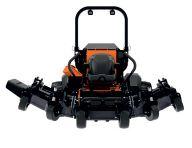




Fleet Week Promotions only valid at participating Shindaiwa Dealers. Check in-store for full details.
ALBERTA FOREST & GARDEN BROTHERS TWO SMALL ENGINES INC FATHER & SONS POWER EQUIPM
EDGE EQUIPMENT LTD. THE LAWNMOWER HOSPITAL
BRITISH COLUMBIA
ABBOTSFORD BURNABY CAMPBELL RIVER CHILLIWACK
FORESHORE EQUIPMENT & SUPPLY
FORESHORE EQUIPMENT & SUPPLY
TERRY’S POWER EQUIPMENT SALES
CHILLIWACK OUTDOOR POWER EQUIP
PILON TOOL RENTALS
ISLAND SAW & TURF
B & L SMALL MOTORS LTD
SAVOY EQUIPMENT
MILL BAY POWER PRODUCTS LTD
AJAC’S EQUIPMENT INC
KOOTENAY INDUSTRIAL
FORESHORE EQUIPMENT & SUPPLY
ARROW EQUIPMENT LTD
HI-WAY POWER AND MARINE LTD
SUNBELT RENTALS OF CANADA
FRASER VALLEY EQUIPMENT LTD
ARCOM POWER EQUIPMENT INC
WEST COAST GARDENERS
VERNON
WHISTLER
SAVOY EQUIPMENT
REVOLUTION POWERSPORTS REPAIR
403-248-0878
403-279-2244
403-259-4555
780-455-3343
780-437-1851
604-317-4481
604-317-4481
250-287-9755
604-792-4410
250-338-5361
250-748-4341
250-376-0033
250-868-1010
250-743-7994
250-754-1931
250-352-5301
604-317-4481
604-987-9926
250-248-3621
803-578-9271
604-590-1433
604-533-0081
604-430-4117
250-545-0627
604-905-7733
WINNIPEG CUMMINGS SMALL ENGINE SERVICE 204-237-4911
FREDERICTON
DALHOUSIE JCT R D POND SALES BREMNER & SONS LTD
ONTARIO
BARRIE
BELMONT
BURLINGTON
DUNNVILLE
GRIMSBY
MISSISSAUGA
MISSISSAUGA
MISSISSAUGA
NEPEAN
SCARBOROUGH
SUDBURY
TORONTO
VARS
WELLESLEY
MERCER EQUIPMENT INC
DALE EQUIPMENT
B.R. DICKSON EQUIPMENT INC
R.E. EGGER TRUCK & MACHINE LTD
AG & TURF POWER SERVICE INC
CURRENT POWER MACHINERY INC
W.E. ENTERPRISES LTD
WPE LANDSCAPE EQUIPMENT
B&T MACFARLANE
ALPINE LAWN & GARDEN
SUDBURY SMALL ENGINE
KOOY BROS. LTD
M.R. BLAIS SALES & SERVICE INC
WELLESLEY HOME CENTRE
LOCATION LAUZON AMOS INC
ROUTHIER EQUIPEMENTS
DISTRIBUTION MICHEL JETTE INC
ALCIDE MINI MECANIQUE CENTRE LOCATION GAETAN LONGPRE
EQUIPEMENTS GRENVILLE INC
LAVOIE 2TEMPS 4 TEMPS INC
PETITS MOTEURS FLEURIMONT INC SERVICE MECANIQUE MOBILE
SASKATCHEWAN
506-472-7663
506-753-4780
705-503-3535
519-644-0670
905-331-5040
905-774-1060
905-945-4848
905-822-4211
905-629-1424
905-569-2055
613-225-0555
416-292-8900
705-564-9772
416-242-3513
613-443-1230
519-664-4966
819-732-2652
819-849-4896
819-472-2221
819-478-4739
819-281-6084
819-242-3306
819-623-9623
819-563-0050
819-564-6623
LLOYDMINSTER WICKHAM NURSERYLAND 306-825-3262
“If we know there’s an issue, we can plan for it and we can schedule for it and make sure we don’t put people at risk.”
There are several layers of safety to consider, Gerich said. If a contractor’s usual clientele is condominium or homeowners’ association properties, and he has the chance to take on new work at a large office park, he is apt to be adding to his risk and hazard scenario. He may be accepting work for which he’s not accustomed, with bigger spaces, higher traffic volumes and more pedestrians. By taking on a partner who has experience working with larger properties, the contractor establishes a safeguard to help protect his reputation in the event of a bad setback.
Gerich cautioned against taking on new work at sites where different contractors are hired each year. A red flag goes up and the contractor is left asking questions.
“Is it the site, the owner, the manager? What’s important is you limit your exposure, limit your risk and find out what’s going on there.”
The contract might be a six-figure account, but the contractor must consider how his company and employees are being exposed at a site that seems to have no staying power, Gerich said.
“Talk to the previous years’ contractors,” he suggested, adding it’s not a matter of tapping into their trade secrets, but simply looking out for one another.
A contractor’s employees are usually the first ones to arrive at a job site that has yet to be cleared of snow and ice. If they’re not wearing proper footwear for the job, they’re going to slip and fall. Gerich said companies can’t afford to have employees injured and out of work, especially with today’s labour shortages.
“Something as simple as having proper footwear can make all the difference in the world.”
Footwear companies will often visit a contractor’s business to outfit employees with quality boots. Gerich said buying boots in bulk could potentially lower the price per pair by a significant amount, and the end cost could be shared between the contractor and employee.
Pre-season site checks should include such things as the presence of electrical cords, including those frequently draped across sidewalks to power holiday decorations or electric vehicles. Four to six inches of snow will cover cords, rendering them invisible when clearing snow.
Contractors must be on the lookout for other safety hazards at a job site. Structures such as awnings at office buildings or hospital entrances may not be tall enough to allow a truck to get underneath, putting them at risk of being torn. Rusted light poles should be reported to the client to prevent a possible safety violation.
Gerich said looking up is as important as looking down during site inspections. Leaking gutters, for example, can produce ice patches on the ground that contribute to slip-and-fall accidents. If such things are detected during the pre-season, the client has the time to make repairs to prevent a major catastrophe.







storm snapped 1,100 trees at Ottawa Hunt Club mere months ahead of CP Canadian Women’s Open.
By Mike Jiggens
Excitement was in the air at the Ottawa Hunt Club in the spring of last year. The more than century-old private golf course was gearing up to host the 2022 CP Canadian Women’s Open – a premier event on the LPGA Tour. The tournament was supposed to have been played at the Hunt Club the year before, but the COVID-19 pandemic forced its cancellation.
As COVID restrictions began to loosen in 2022, the event was back on the Tour’s schedule, and was to mark the fourth time it was to be played at the historic Hunt Club. Excitement abounded, especially with news that hometown favourite Brooke Henderson would be in the field. But, a mere three months before the first tee shot was hit, disaster struck. The Ottawa area found itself at the epicentre of a severe storm on May 21 in which Mother Nature unleashed her fury with hurricane-like winds that clocked in at upwards of 120 kilometres an hour.
Countless trees in the capital region were uprooted, snapped in two or had branches broken off and strewn everywhere. Unfortunately for the Hunt Club, it didn’t escape Mother Nature’s wrath.
The club was left with a major mess on its hands with its biggest event in five years

looming only a few months away. Superintendent Eric Ruhs and assistant Bobby Cook immediately got to work co-ordinating a massive cleanup job. The pair shared the stage in November at the 32nd annual Ontario Seed Company/Nutrite professional turfgrass seminar to tell the story of the club’s efforts to clean up the damage and have the golf course ready for the women’s open.
It wasn’t an easy task, they told a roomful of their peers in Waterloo. Because damage from the storm was so widespread, the golf club was only one of several institutions in the Ottawa area vying for support staff to
assist in cleanup efforts. Ontario Hydro, for example, “carried a bigger stick” and was first in line to gain the assistance of local tree care companies to cut and remove damaged trees.
“It was difficult to get support staff,” Ruhs acknowledged, adding it was “out of the question” to gain the assistance of any nearby tree care businesses. He reached out to colleagues in the Toronto and Montreal areas to seek help with the cleanup and alerted Golf Canada about the extent of the damage as time was now of the essence.
When the storm hit, the Hunt Club was amid a bunker resurfacing project at the
tournament course with plans to have the job finished by the end of May. Only a quarter of the work was completed, having begun the previous year, and key decisions needed to be made about where the project ranked among the list of priorities.
Cook said the back nine bunkers would be given greater attention since most of the televised coverage of the tournament would be focused on holes 10 through 18. Removing and hauling away the fallen and broken trees was top priority, not only to minimize damage to the course, but to ensure safety was at the forefront.
The club’s maintenance staff and a team of volunteers, including members, were divided up and assigned to the tournament course (West and South courses) to do everything possible to save bentgrass, and to the nine-hole North course to clear
debris from the fairways.
Four greens experienced some damage, with the putting surface on the second hole covered by four fallen trees. Damaged trees were also lying in a greenside bunker.
The road leading to the club’s pumphouse – located 1.2 kilometres away – was blocked, restricting access. Ruhs said that once he finally reached the pumphouse, he discovered there was no power available. A generator was needed quickly, but the club was seen as low priority. A brand-new generator was eventually procured, but voltage differentiations prevented it from working properly.
Ontario Hydro said it likely couldn’t tend to the club’s needs for at least 10 days. Six days had already elapsed since the storm hit when it was realized the generator wasn’t functioning. Ruhs opted to plug the generator into the clubhouse and connect it to the fire system, allowing for a handful of nearby
greens to be irrigated.
“By day seven, Hydro said they could help, and said they’d arrive by 4 p.m.,” Ruhs said. The utility reached the club hours later – at 1:30 – but arrived at the wrong address (the clubhouse, not the meter address). It wasn’t until noon on the eighth day after the storm when the Hunt Club’s water became operational again, sparking “a euphoric cheer.”
Safety was still a priority, he said, and a bucket truck arrived from Kingston to go treeline to treeline
“The strong support we got from the industry was immeasurable,” Ruhs said, noting many of the volunteers came from within the industry. “Our primary target was to remain safe.”
The golf course was closed for 16 days to allow sufficient time for cleanup. Although it was initially estimated that 500 trees were damaged, the count was about 1,100. Logs
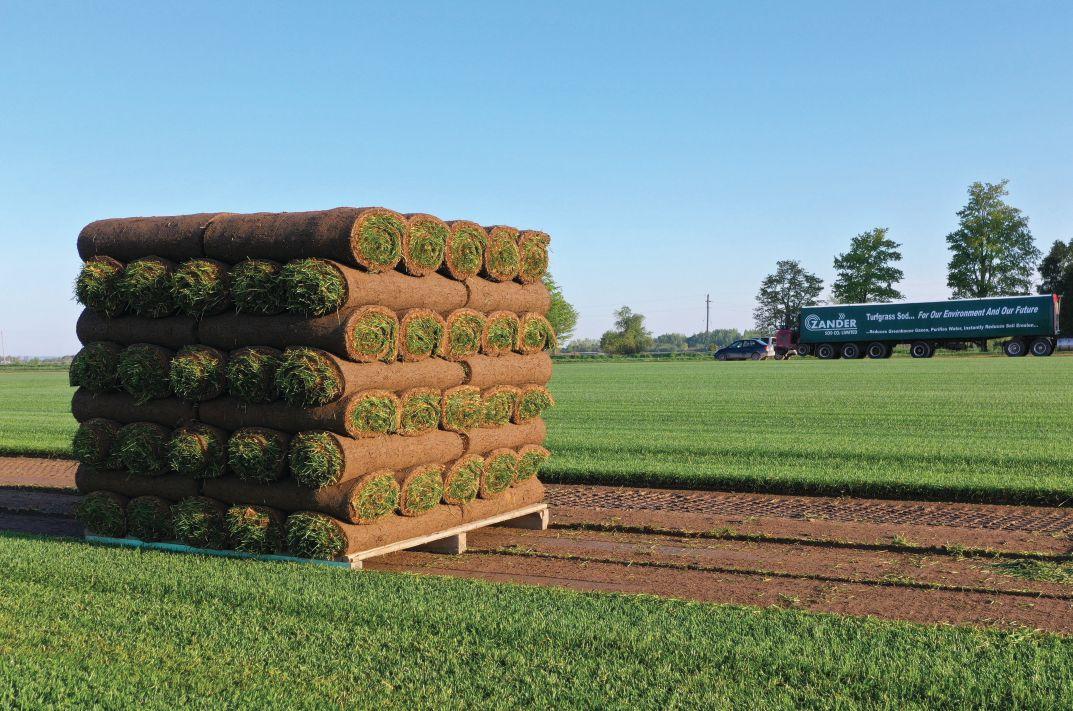
were still being hauled off the course by the 13th day after the storm.
Cook said it was important to properly manage the cleanup team throughout the process and stick to a schedule. Seasonal employees were rotated on a six-days-on, three-days-off basis.
“We tried to stick to that schedule as much as we could,” he said. Incentives were offered for those who worked overtime or on their days off, and lunches were provided for the volunteers and staff.
Many of the club’s routine maintenance practices were “kyboshed,” Cook said, with core aeration on tees and fairways going by the wayside on the North course. Only the greens underwent any cultural work.
The original plan was to core aerate the tournament course’s tees twice prior to the women’s open, but it was done only once. Fairways, which are typically aerated each season, were tended to according to their condition. Some emerged from the winter


better than others, and those best judged to handle core aeration were looked at first.
About 250 trees that had fallen into the yards of neighbouring residences along the east end of the property were cut and removed over a period of two and a half days. A 90-ton crane was utilized more for its reach than its strength to haul fallen trees back onto the golf course and taken to a staging area.
As the property’s east end was being cleaned up, crews had to deal with remaining stumps at the tournament course.
“This was no small feat, and all the tree companies were preoccupied with housing and hydro concerns, so we were dealing with the challenge of getting support to help us,” Ruhs said.
Managers from a tree company with which the Hunt Club has previously worked came in on a Saturday, taking out 150 stumps – one at a time – and grinding down another 270.
A road bordering the south edge of the property – a stretch of about 1.8 kilometres – also sustained heavy damage, and fallen trees needed to be removed from the roadside to ensure safety.
“The problem wasn’t losing 1,000 trees,” Ruhs said. “It was the volume and the timing and surgically removing that off the property and not leaving a mark on the tournament course.”
The volume of the logs and mulch produced at the east end of the golf course property was astronomical, he said, and much of it was still there at the time of his and Cook’s presentation in November. Plans were to bring in grinding equipment to help finish the job before Christmas.
Ruhs said the pile of mulch measured about 250 feet in length, 60 feet in width and 28 feet in height.
“The volume of material was just incredible.”
The rough program hadn’t significantly changed throughout the process.
The 2022 CP Canadian Women’s Open set an attendance record with upwards of 75,000 spectators and was named LPGA tournament of the year.









target-specialty.ca |
Mark Jull
T&O Sales Manager, West Canada mark.jull@target-specialty.com
403.390.2116
Dwyane Simpson
Josh Seibel
Saskatchewan and Manitoba josh.seibe@target-specialty.com 306.861.8296
Gregor Kowalski
Vancouver Island gregor.kowalski@target-specialty.com
Chris Nelson
T&O Sales Manager, East Canada chris.nelson@target-specialty.com 647.382.6868
Colin Hindle
Ottawa and Eastern Ontario colin.hindle@target-specialty.com
Paul Powers
Toronto - West / Niagara paul.powers@target-specialty.com
289.209.1869
Craig McCutcheon
Northern Alberta dwayne.simpson@target-specialty.com 403.391.1984 Mark
Chris Paterson
Southern Alberta and Kootenays chris.paterson@target-specialty.com
403.540.0157
250.686.3909
Mitch Davidson
Southern Alberta and Kootenays mitch.davidson@target-specialty.com
587.223.2083
613.314.9711
Joey Losito
Quebec South and East joseph.losito@target-specialty.com 819.571.1677
South-West Ontario craig.mccutcheon@target-specialty.com 905.351.6544
Jason MacRae
Quebec North and West jason. macrae@target-specialty.com 514.712.8006
Now is the time to have turf maintenance equipment checked thoroughly so that everything is ready for the spring season.
By Justin Parrott
Spring is almost upon us, meaning it’s time to dust off the equipment that’s been in storage over the winter and get it ready for what is always the busiest time of year.
Ensuring your machines are prepared before the grass starts growing can prevent any unforeseen downtime for your operation and provide peace of mind, knowing your equipment is functioning at optimal performance for the lush spring grass that awaits.
Seasoned operators understand that time is as strong a currency as any, which is why the late stage of winter, when the snow begins to melt away, is always a great time for a thorough equipment check-up to make certain it is in proper working condition. This is the period where operators should complete any repairs or maintenance they were unable to finish in the fall.
Routine maintenance is key, though it can be overwhelming if it’s your first time or if you need to prepare multiple machines for the spring. It can be helpful to develop a quick checklist outlining the core elements to check on each machine before beginning your work.
A good first step is to check for any existing fluid leaks pooling on the floor where your machine is stored. If a leak is, in fact, present, it’s best to address it before beginning any other work.
When looking inside the machine, keep in mind that cold weather can be harsh on batteries, especially if left outside in the elements. A few options to consider are either placing the battery on a trickle charger or getting a health check on the battery from your local dealer so that the machine can start up reliably for the season ahead.
Starting the season with fresh fluids is essential to proper starting and running. Fuel sitting for a long time will begin degrading and will spoil, causing havoc on your carburetor or fuel injection system. The shelf life for some fuels can even be as little as three months depending on the ethanol content. Fuel stabilizer will help combat the fuel breakdown if mixed before storage but will not help “cure” bad fuel. If the fuel smells sour or is darker in colour, chances are it has gone bad and should be drained and replaced with fresh fuel before the first start-up. A good rule is to always drain the fuel at the end of each season before you put the machine in storage.
Before you get your mower rolling, another important step is changing the oil. Dirty oil can damage your engine, shorten the engine’s life, and cause future maintenance problems. It’s recommended that you change your oil after every 100 hours of mower usage or once a year, whichever comes first.
Turning attention to the exterior of the machine, pneumatic tires tend to lose pressure after some time, so checking tire pressures and ensuring the tires have a solid tread with minimal cracks will help

you will track straight and mow evenly.
It’s also good practice to check that your spindles, wheels and mower deck lift system are moving freely and smoothly. While machine designs may vary, the owner’s manual for your equipment will outline the greasing points and greasing intervals. I’d also recommend completing a quick check on machine switches to make sure they are all working properly.
Not having your mower in optimal shape may lead to poor cut quality and can even reduce the speed you can cut at, costing you valuable time. If you didn’t do so in the fall, ensuring the underside of your deck is clean and blades are sharpened will maximize your productivity.
Overall, it’s ideal if your machine is cleaned and looking fresh for the spring.
Consider using a brush or rag to wipe down your mower to remove any excess debris – such as leaves or grass clippings – off the deck and out of crevices where there could potentially be build-up, such as near the engine or on the wheels. For the deck, try waxing it so you can prevent buildup of grass and dirt.
The months leading up to spring may also be a good time to consider what kind of machine is best for your maintenance operation. While mowers come in many shapes and sizes, sit- and stand-on zero-turn mowers are the most popular for commercial and residential operators. They typically have quick mowing speeds, are nimble and are highly customizable with different attachments, such as mulch kits or grass catchers. Zero-turn mowers
are available in compact low-cost homeowner grade and can expand into commercial-grade, high-horsepower machines, or anywhere in between.
For large acreage mowing, front-mount mowers are sometimes preferred by operators from a comfort point of view, since they get less neck strain by having the mower ahead of the machine and not behind. Frontmount mowers can also mow in areas conventional mid-mount mower machines cannot; they can get under fences, benches and shrubs more easily, which reduces the amount of trimming required afterwards.
Commercial walk-behind mowers remain a popular option amongst landscapers and can either be self-propelled or pushed manually. These types of machines tend to differ from the traditional residential mowers that many are accustomed to as they are built with heavy duty transmissions, commercial-grade engines and thick fabricated
decks – which is to say, these machines are built to last.
In terms of trends, stand-on zero-turn mowers are quickly becoming the machine of choice, as their compact frame allows them to mow more closely to obstacles, reducing the amount of trimming needed. The quick access to the zero-turn mowers operator station is also a bonus for operators who are often on and off the machine. In terms of storage, the compact size of zero-turn mowers means that you can fit more machines in a designated space, such as a trailer or garage.
Proper pre-season maintenance will put you and your machine in the best position possible to succeed at the jobs that lie ahead, meaning any time you invest in proper equipment care early on should pay immediate dividends to your operation. Meet with your local dealer if you have questions about your machine.

By the Outdoor Power Equipment Institute
As the weather grows warmer, and mowers and other outdoor power equipment are put to greater use and new equipment is acquired, remember to instill safe operating practices among your employees.
“Think safety first,” says Kris Kiser, president and CEO of the Outdoor Power Equipment Institute (OPEI). “I can’t stress enough the importance of your employees, seasonal help and H2-B workers understanding and following manufacturer’s guidance for safe operation, especially mowers.”
OPEI offers the following tips to get crews and their equipment ready for a safe season:
Identify the differences in your machines. Whether you’re using a zero-turn, ride-on, mid-mount, rear-mount, garden tractor or other type of mower, make sure you and your crew members understand their unique design, requirements, weight classification, and other differences that impact how to use it safely.
Review equipment with your work crews before the season gets rolling. Make sure all your workers understand the safety features of the equipment they are using, and that they are following manufacturer guidelines and on-product messages for safe operation. Do spot safety checks on job sites and incorporate safety checks into your

morning roll-out.
Make sure safety features are operable. Figure out the safety features on all your equipment, and make sure they are operable. Do not disable or modify manufacturer-installed safety equipment. Be sure that you review this with your work crews and check equipment when it returns from a work site.
Walk the areas you intend to mow and remind crews to do so. Slopes, wet grass and weather may impact the equipment’s performance, as well as safe handling procedures. Remind everyone to pick up sticks and limbs that may have fallen to the ground and any loose objects that could be hit by a mower. Inspect trees for damaged limbs that may get in your way when mowing.
Identify slopes in advance. Follow all manufacturer guidance regarding operating machinery on slopes.
Manufacturer-supplied owner’s manuals and guidance should be readily available. If you have lost the guidance supplied with the machine, look it up online and save a copy of it on your computer, print out a
copy, in any language needed, for your employees and keep it in an easily-accessible location like the break room and trucks. Do not remove on-product safety messages.
Look over equipment before use in the field. Check the air filter, oil level and gasoline tank. Watch for loose belts and missing or damaged parts. Replace any parts needed or take your equipment to a qualified service representative. Check to be sure that you have the appropriate, manufacturer-recommended batteries, if needed.
Protect your power. Use only E10 or less fuel in gasoline-powered outdoor power equipment if it is not designed for higher ethanol blends. Add a fuel stabilizer if you don’t use up all the fuel in the tank right away. Burn off any fuel before storing the mower more than 30 days.
Keep your equipment clean. Equipment will run more efficiently and last longer. Always remove dirt, oil or grass before using and storing, and store all equipment in a dry location, avoiding damp or wet environments.
Exmark’s

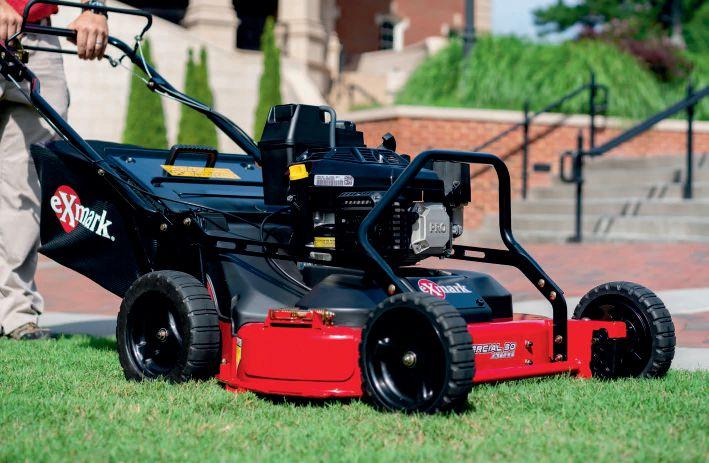


at the GTI led to the creation of a podcast called Canada Turf Talks which highlights the different types of careers available within the turf industry.
“Anyone who’s from the turf industry can listen to those and hear some words of wisdom and career advice. Hopefully it’s something interesting for them to listen to as they’re working on their day or going on a commute.”
Stricker is chairman of the American Phytopathological Society’s turfgrass pathology committee and is a junior board member with the Canadian Phytopathological Society. The organizations allow for the sharing of resources and information among turf pathologists.
The professional turfgrass industry is becoming more inclusive and more accepting than ever before, she said, adding women who might wish to consider a career in the industry need not be afraid.
“Historically speaking, there have not been as many women in this industry, but there’s absolutely no reason with today’s technology that a woman couldn’t do what a man can do in turf management.”
Stricker suggested women in the industry seek out mentors, noting a key adviser of hers is Dr. Katerina Jordan, associate professor of plant agriculture at the University of Guelph. Becoming a professor herself is one of her ambitions.
While unearthing new research and sharing it with others has been a career highlight for Stricker, it can also present a challenge at times when it generates pushback from the public, she said.
“Some people think maybe (turfgrass) isn’t environmentally friendly or not worth the time or effort, but we have a lot of data and research to suggest that it can be very beneficial to the environment and very beneficial to our human health.”
The naysayers are often unaware of the important role turf plays in erosion control, pest control and water management, she added.
It was while watching a gardening program on television when Nuttall realized that a career in horticulture might be her calling. She was a college student at the time, taking such courses as psych-




ology and sociology, but there was something about working with plant material that inspired her to seek a new career path.
“It felt like a silly idea at first when I was watching TV and saw a gardening show,” she said. “It was like a switch turned on for me. I’m glad that I pursued that. When I first started, I barely knew anything. It just totally opened my eyes to the world of horticulture. There’s so much more than what I imagined when I first started out.”
Nuttall enrolled in a 10-month horticulture program which led to her first job at the University of Victoria, where she’s been ever since. More recently, she was promoted to the position of irrigation technician after working five years as a sports field mainten-
3 LEVELS OF COVER FOR ALL BUDGETS
Breathable – Does your turf cover allow for proper air / water flow?
Efficient – Does your turf cover have Smart Edge technology, reducing the need for extra grommets/hemmed edges?
Ease of Use – Is your cover lightweight, and manufactured in one piece?
Peace of Mind – Does your turf cover offer the best warranty, from a company with over 35 years of experience?
Durability – Can your turf cover withstand harsh winters, while offering quick germination and easy maintenance?
ance technician.
Her predecessor was promoted to supervisor last year, which opened the door for Nuttall to step into the position.
“I want to be very well rounded in every aspect of horticulture, so I thought this was a great opportunity to learn about irrigation. After doing it for one year, I’ve learned so much already.”
In addition to looking after the irrigation needs of five University of Victoria campus sports fields – two soccer, two rugby and one multi-purpose field – she tends to the watering needs of all garden beds and lawns.
“There are times we’ll jump in on the sports fields to help out, so it’s a good mix of both. But right now, my focus is on irrigation.”
Nuttall cites the opportunities to learn and grow with the help of her co-workers as a career highlight over the past eight years.
“Just the fact that I’ve been able to try out so many different things without having to change jobs and without having to change employers has been a highlight, and the people I work with are really awesome, too.”
There have been challenges, however. She admitted
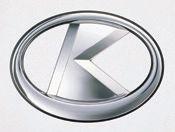

math has never been her strong suit, but it’s a vital component in the field of irrigation and was equally important during her previous work in sports field maintenance, especially when calibrating for fertilizing.
“Now I think I’ve gotten pretty comfortable with it.”
One of the more enjoyable aspects of her career is the people with whom she works.
“I couldn’t ask for a better crew. Everybody on the crew has a positive dynamic and everybody gets along quite well with each other.”
Most of her colleagues are male, but she said she doesn’t feel she’s treated any differently from anyone else.
“I feel like I’ve had to find my voice a little bit and speak up if I find something doesn’t seem totally fair or if there’s something that doesn’t seem quite right. But everyone is willing to listen and be open to discussion. I feel very fortunate to have that.”
Her advice to other women who might be thinking of a career in turf: “Say yes to as many opportunities as possible. Anytime something like that is offered to you, take it. Don’t sell yourself short. Remember that all women are equally capable of doing what everybody else can do.”
Four more women will be profiled in Turf & Rec’s April/May issue
They




“No Mow May” and “Leave the Leaves” campaigns challenged through study.
By Dr. Sara Stricker and Dr. Eric Lyons
Have you seen the slogans? Signs may appear in your neighbourhood declaring: LEAVE THE LEAVES, NO MOW MAY or SKIP THE RAKE. These campaigns have popped up in North America in recent years, pledging to increase biodiversity or support pollinator insects. The experts at the Guelph Turfgrass Institute want to weigh in on this debate.
“No Mow May” started in the U.K. with the idea that the lawn can provide food to pollinators in the early spring through the flowering weeds. The other campaign, “Leave the Leaves” (also called “Skip the Rake”), suggests that leaves should be left untouched on the lawn surface to provide overwintering niches for pollinators and other beneficial insects. However, too much leaf cover could lead to smothering and death of the turf.
Both practices would theoretically increase biodiversity in a home lawn, but the final outcome may be less desirable than expected. We theorize that both campaigns will be detrimental to the home lawn – possibly increasing the presence of undesirable weeds and eventually leading to homeowner frustration and an unusable lawn. In addition, increased biodiversity may also mean

an increase in unwanted pests such as ticks, mites, and rodents.
One study, which has since been retracted from publication, suggested that lawns participating in No Mow May had greater pollinator diversity and abundance to mowed urban green spaces (Del Toro and Ribbons, 2020). Unfortunately, the study compared un-mowed home lawns to parks, which is not a valid comparison. Home lawns typically have more diversity than parks, due to their closer proximity to flower beds, flowering trees, and hedges. A better comparison would have been to compare lawns participating in No Mow May to lawns that were not.
In a new study at the Guelph Turfgrass Institute, we will be observing lawn-height turf (Kentucky bluegrass, chewings fescue, perennial ryegrass mix) which has either been covered with Norway maple leaves (approximately five centimetres deep), raked clear, or covered with Norway maple leaves which were then mulched by a lawnmower. In the spring of 2023, half of these plots will be left UN-MOWED until June 1, thus simulating both the No Mow May campaign and Leave the Leaves. Turf quality, weed encroachment, and disease pressure will be evaluated.
We expect to see a significant decrease in
turf quality for the plots covered with leaves, and we might see an effect of fertilization from the mulched leaves. Dr. Paul Koch at the University of Wisconsin is conducting a similar trial on different depths of leaf cover (five or 15 centimetres, mulched or not mulched) to test effects on turf quality and soil health over the next few years.
It is important to consider that mowing less frequently can create breeding ground for unwanted insects such as mosquitos, ground-nesting bees and ticks, so please keep an eye out and prevent kids and pets from entering areas of long grass.
Supporting a diverse ecosystem is important, but we also want to maintain the usefulness and ecosystem services provided by a healthy lawn.
Ways to support pollinators and increase biodiversity in urban spaces:
• Add pollinator-friendly flowers, trees, and shrubs to the yard – early season flowers include serviceberry, willow, and lilac
• Overseed your lawn with white clover and creeping buttercup, although note that these could overtake the lawn
• Plant crocus bulbs into a lawn to provide pollen in March and April, since the flowering period is typically finished before the grass needs its first trim

Humic Coated Ammonium Sulfate (HCAS™) is the latest innovation to join our premium line of humic-coated fertility products.
Utilizing proprietary technology to produce clean, spherical, free-flowing granules bonded with potassium humate, HCAS (20-0-0-23S) is an ideal nitrogen source for the cooler months of the growing season and is complementary to Humic Coated Urea (HCU®) applications in the warmer months of the growing season.
Learn more at AndersonsPro.com


By CCOHS
The Canadian Centre for Occupational Health and Safety (CCOHS) promotes the total well being of workers in Canada by providing information, training, education, systems and solutions that support health and safety programs and injury and illness prevention. www.ccohs.ca
Just as a well-oiled machine functions better than a rusty one, our bodies need smooth, healthy tendons to move freely and without friction. Tendons are rope-like bundles or bands of strong, smooth, shiny fibres that attach muscles to bones to enable the joints to move easily. Some conditions in the workplace put workers at risk of developing tendon disorders or tendinopathies. These disorders result in the tendons not functioning normally. If you have pain in areas over a tendon or it is tender to the touch, swollen, or red and you feel the movement is restricted, you may have tendinitis or tenosynovitis.
Tendinitis (also commonly called tendonitis) describes a condition in which the tendons become inflamed or irritated. It can occur anywhere in the body but is most common in the shoulders, elbows, knees, and hands. Doing tasks that are repetitive or for a long period of time, or that involve awkward or stationary postures, vibration, and localized mechanical stress, can tear tendon fibres apart like the way a rope becomes frayed. Tendons that are injured can become thickened, bumpy, and irregular over time, and if they are not given the time and rest needed to heal, can become permanently weakened.
Jobs that require repeated or forceful movements of the fin-
gers, wrist and forearm can cause tendinitis of the elbow, also known as “tennis elbow.”
Tendinitis of the elbow is often associated with simultaneous rotation of the forearm and bending of the wrist, stressful gripping of objects with inward or outward movement of the forearm, or jerky, throwing motions – as is often seen in tennis players, but can also occur in the workplace, especially among those who work in landscaping, gardening, or woodworking.
Tenosynovitis is an inflammation of the tendon sheath. The sheath produces a fluid that keeps the tendon lubricated. However, prolonged activities, forceful exertion, awkward and static posture, vibration, and localized mechanical stress can cause the lubrication system to not work properly. The sheath either fails to produce enough fluid or produces fluid with poor lubricating qualities. This creates friction between the tendon and its sheath and results in inflammation, swelling and other problems. Tenosynovitis occurs in the palm side of the wrist and hand, and in the back of the hand and wrist.
Treatment of tendon disorders
Tendon disorders rarely require surgery. Treatment usually consists of staying away from activities that cause or aggravate the disorders, or pain relief through non-steroidal anti-inflamma -

Doing tasks that are repetitive can tear tendon fibres apart
tory drugs, ice or heat, friction massage, stretching and strengthening exercises, transcutaneous (through the skin) electrical nerve stimulation or ultrasound. However, some of these methods have yet to be fully evaluated.
Treatment can only be effective if the workplace gets involved to ensure that the activities that caused or aggravated the disorder in the worker are avoided. This participation is essential to help prevent the condition from persisting or recurring.
Prevention is key Injury prevention practices are typically covered in your workplace health and safety program. To help prevent tendon disorders, your plan should include how to identify and assess risk factors.
Together with your workers, review which activities could result in tendon disorders. Ideally the review would identify the physical demands on a worker, areas of the body that may be impacted, and sources of risks.
Ensure work practices and equipment are designed to re-
duce repetitive movements, awkward postures, and the amount of time a worker must spend in one position without moving. Jobs should also be designed to lessen the need for significant force to be used and encourage frequent rest breaks to be taken.
Prevention efforts should also include regular training and education. Training should address how to prevent and reduce the risks associated with tendon disorders before signs and symptoms develop. Workers need to understand how to set up ergonomic workstations and good practices to reduce the risk of injury. Procedures for reporting incidents should be clearly communicated and accessible to everyone.
What workers can do
Workers can play an active role in keeping themselves safe on the job by remembering three key words: know, practice, and notify. First, it’s important to know the signs and symptoms that might indicate a tendon disorder is developing or is present. Next, make sure to practise safe techniques for the type of activity being done. Finally, notify the appropriate persons in the workplace about any symptoms before the pain gets worse, being sure not to work through the pain to prevent further injury.
Protecting the health and safety of all employees in the workplace is a shared responsibility.









WORKS DAY AND NIGHT
Around your schedule
AUTONOMOUS
Operates 24/7, rain or shine, day and night
ADVANCED AUTOMATION
So you can rest assured the job’s done right
EMISSIONS FREE OPERATION
Better for the environment and our customers
QUIET OPERATION
Avoid disturbing customers in noise-sensitive areas
REMOTE COMMAND & MONITORING
Via smartphone app or online portal –because work doesn’t stop when you’re busy doing other things
WORKS WITH TM-2000
In other words, Driving Range 2.0 comes with healthier, better-looking turf
